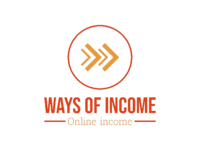To become a medical transcriptionist and work from home, you can follow these general steps:
1. Acquire the necessary skills and knowledge:
Medical transcriptionists need a solid understanding of medical terminology, anatomy, physiology, pharmacology, and medical procedures. You can gain this knowledge through formal education or specialized training programs. Look for accredited institutions or online courses that offer medical transcription training.
2. Complete a training program:
Enroll in a reputable medical transcription training program to learn the required skills. These programs typically cover topics such as medical terminology, transcription techniques, electronic health records (EHR) systems, and grammar and punctuation.
3. Obtain certification (optional):
While certification is not always mandatory, it can enhance your credibility and job prospects. Organizations such as the Association for Healthcare Documentation Integrity (AHDI) offer certification exams for medical transcriptionists.
4. Gain practical experience:
Practice your transcription skills by transcribing medical reports, dictations, or audio files. Consider volunteering or finding an entry-level position to gain hands-on experience and build your portfolio.
5. Set up a home office:
Create a designated workspace in your home where you can work comfortably and without distractions. Ensure you have a reliable computer, high-speed internet connection, quality headphones, and transcription software.
6. Invest in transcription equipment:
To perform transcription efficiently, you may need a foot pedal, which allows you to control audio playback while typing, and specialized transcription software that enables you to transcribe and format documents accurately.
7. Build a professional network:
Join professional organizations and forums related to medical transcription to connect with other transcriptionists, learn from their experiences, and stay updated on industry trends.
8. Search for job opportunities:
Look for remote medical transcription job openings on job boards, freelance platforms, healthcare facilities’ websites, or through specialized transcription service companies. Tailor your resume and cover letter to highlight your relevant skills and experience.
9. Apply and showcase your skills:
Apply for positions that match your qualifications and submit samples of your transcription work to demonstrate your accuracy, attention to detail, and understanding of medical terminology.
10. Stay updated and continue learning:
The healthcare industry evolves constantly, so it’s important to stay updated on new procedures, regulations, and technologies. Participate in professional development opportunities, attend webinars, and continue expanding your knowledge.Remember, building a successful career as a medical transcriptionist requires dedication, accuracy, and ongoing learning. Develop excellent listening and typing skills, maintain a high level of professionalism, and deliver accurate and timely transcriptions to establish a strong reputation in the field.
To become a medical transcriptionist and work from home, you can follow these general steps:
1. Acquire the necessary skills and knowledge:
Medical transcriptionists need a solid understanding of medical terminology, anatomy, physiology, pharmacology, and medical procedures. You can gain this knowledge through formal education or specialized training programs. Look for accredited institutions or online courses that offer medical transcription training.
2. Complete a training program:
Enroll in a reputable medical transcription training program to learn the required skills. These programs typically cover topics such as medical terminology, transcription techniques, electronic health records (EHR) systems, and grammar and punctuation.
3. Obtain certification (optional):
While certification is not always mandatory, it can enhance your credibility and job prospects. Organizations such as the Association for Healthcare Documentation Integrity (AHDI) offer certification exams for medical transcriptionists.
4. Gain practical experience:
Practice your transcription skills by transcribing medical reports, dictations, or audio files. Consider volunteering or finding an entry-level position to gain hands-on experience and build your portfolio.
5. Set up a home office:
Create a designated workspace in your home where you can work comfortably and without distractions. Ensure you have a reliable computer, high-speed internet connection, quality headphones, and transcription software.
6. Invest in transcription equipment:
To perform transcription efficiently, you may need a foot pedal, which allows you to control audio playback while typing, and specialized transcription software that enables you to transcribe and format documents accurately.
7. Build a professional network:
Join professional organizations and forums related to medical transcription to connect with other transcriptionists, learn from their experiences, and stay updated on industry trends.
8. Search for job opportunities:
Look for remote medical transcription job openings on job boards, freelance platforms, healthcare facilities’ websites, or through specialized transcription service companies. Tailor your resume and cover letter to highlight your relevant skills and experience.
9. Apply and showcase your skills:
Apply for positions that match your qualifications and submit samples of your transcription work to demonstrate your accuracy, attention to detail, and understanding of medical terminology.
10. Stay updated and continue learning:
The healthcare industry evolves constantly, so it’s important to stay updated on new procedures, regulations, and technologies. Participate in professional development opportunities, attend webinars, and continue expanding your knowledge.Remember, building a successful career as a medical transcriptionist requires dedication, accuracy, and ongoing learning. Develop excellent listening and typing skills, maintain a high level of professionalism, and deliver accurate and timely transcriptions to establish a strong reputation in the field.














Your article helped me a lot, is there any more related content? Thanks!
Thank you for your sharing. I am worried that I lack creative ideas. It is your article that makes me full of hope. Thank you. But, I have a question, can you help me?
As a Newbie, I am permanently searching online for articles that can benefit me. Thank you
I don’t think the title of your article matches the content lol. Just kidding, mainly because I had some doubts after reading the article.
Your point of view caught my eye and was very interesting. Thanks. I have a question for you.
Thanks for sharing. I read many of your blog posts, cool, your blog is very good.
fascinate este conteúdo. Gostei bastante. Aproveitem e vejam este site. informações, novidades e muito mais. Não deixem de acessar para descobrir mais. Obrigado a todos e até mais. 🙂
You are a very bright person!
Thank you for your sharing. I am worried that I lack creative ideas. It is your article that makes me full of hope. Thank you. But, I have a question, can you help me?
It is actually a great and helpful piece of info. I am satisfied that you shared this helpful info with us. Please keep us informed like this. Thanks for sharing.
Your article helped me a lot, is there any more related content? Thanks!
I got good info from your blog
Thanks for sharing. I read many of your blog posts, cool, your blog is very good.
Thanks for sharing. I read many of your blog posts, cool, your blog is very good.
I would like to thank you for the efforts you have put in writing this website. I am hoping the same high-grade site post from you in the upcoming as well. Actually your creative writing skills has encouraged me to get my own web site now. Really the blogging is spreading its wings fast. Your write up is a great example of it.
Thanks for sharing. I read many of your blog posts, cool, your blog is very good.
I find myself at a loss for words to describe how deeply this resonated with me. It’s not every day that a piece of writing moves beyond the surface to touch something profound and unspoken. You’ve managed to do exactly that — to reach beyond the usual layers of thought and offer something that feels real, true, and deeply meaningful.
This website is my breathing in, really good style and perfect content.
Thank you for your sharing. I am worried that I lack creative ideas. It is your article that makes me full of hope. Thank you. But, I have a question, can you help me?
Great wordpress blog here.. It’s hard to find quality writing like yours these days. I really appreciate people like you! take care
Attractive section of content. I just stumbled upon your website and in accession capital to assert that I get in fact enjoyed account your blog posts. Any way I’ll be subscribing to your augment and even I achievement you access consistently fast.